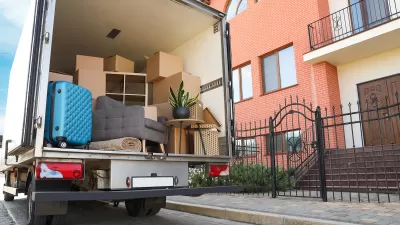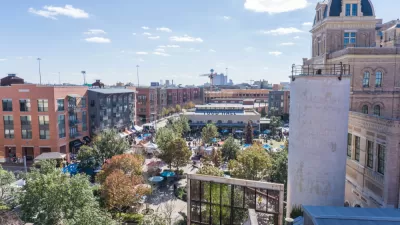The renaissance predicted for urban areas in the United States started strong during the 2010s but slowed in the years leading up to a potentially generation defining pandemic.

New population estimates from the U.S. Census Bureau "show that the nation’s large cities experienced uneven growth trajectories over the last decade," according to an article by William Frey.
"In the last several years, many cities registered growth slowdowns and declines while the rest of the country rebounded from the Great Recession and the population dispersed toward suburbs and smaller areas," according to Frey's summary of the data. "Some cities grew more rapidly than their surrounding suburbs in the early 2010s, but for many, this is no longer the case."
The analysis breaks down by city size, with population figures for cities with more than 1 million residents (10 cities), cities with populations between 500,000 and 1 million (27 cities), and cities with populations between 250,000 and 500,000 (52 cities). Frey also provides analysis of specific cities within that first, largest group, and explains why growth slowed in the nation's largest cities, shifting to suburban locations, in the second half of the decade.
As for what the future holds, Frey offers this speculation:
There are a lot of unknowns, making this difficult to predict. But it is worth noting that big cities registered their highest growth rates during the down economy and deflated housing market in the wake of the Great Recession. Thus, there is a possibility that young adults—both millennials and Gen Z—may again gravitate to big cities as the pandemic recedes and gives way to a recovering economy.
FULL STORY: American cities saw uneven growth last decade, new census data show

Alabama: Trump Terminates Settlements for Black Communities Harmed By Raw Sewage
Trump deemed the landmark civil rights agreement “illegal DEI and environmental justice policy.”

Study: Maui’s Plan to Convert Vacation Rentals to Long-Term Housing Could Cause Nearly $1 Billion Economic Loss
The plan would reduce visitor accommodation by 25% resulting in 1,900 jobs lost.

Why Should We Subsidize Public Transportation?
Many public transit agencies face financial stress due to rising costs, declining fare revenue, and declining subsidies. Transit advocates must provide a strong business case for increasing public transit funding.

Paris Bike Boom Leads to Steep Drop in Air Pollution
The French city’s air quality has improved dramatically in the past 20 years, coinciding with a growth in cycling.

Why Housing Costs More to Build in California Than in Texas
Hard costs like labor and materials combined with ‘soft’ costs such as permitting make building in the San Francisco Bay Area almost three times as costly as in Texas cities.

San Diego County Sees a Rise in Urban Coyotes
San Diego County experiences a rise in urban coyotes, as sightings become prevalent throughout its urban neighbourhoods and surrounding areas.
Urban Design for Planners 1: Software Tools
This six-course series explores essential urban design concepts using open source software and equips planners with the tools they need to participate fully in the urban design process.
Planning for Universal Design
Learn the tools for implementing Universal Design in planning regulations.
Smith Gee Studio
Alamo Area Metropolitan Planning Organization
City of Santa Clarita
Institute for Housing and Urban Development Studies (IHS)
City of Grandview
Harvard GSD Executive Education
Toledo-Lucas County Plan Commissions
Salt Lake City
NYU Wagner Graduate School of Public Service





























